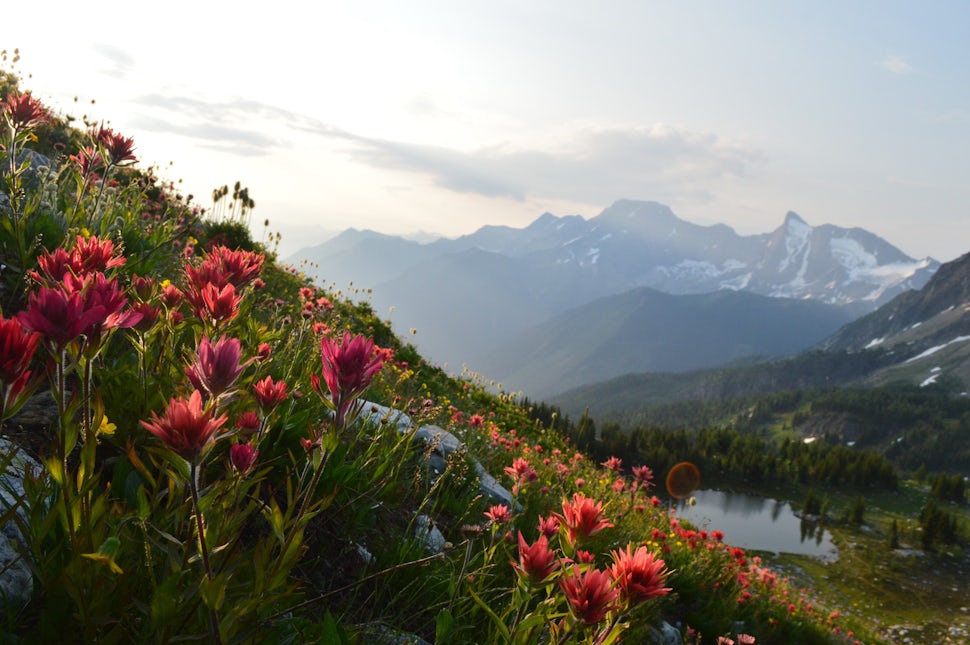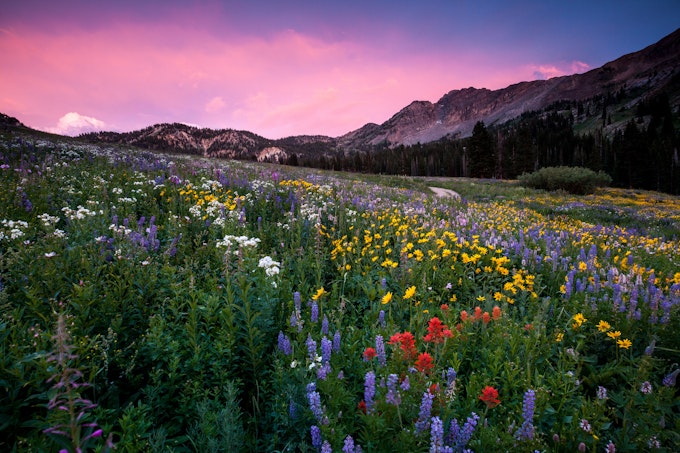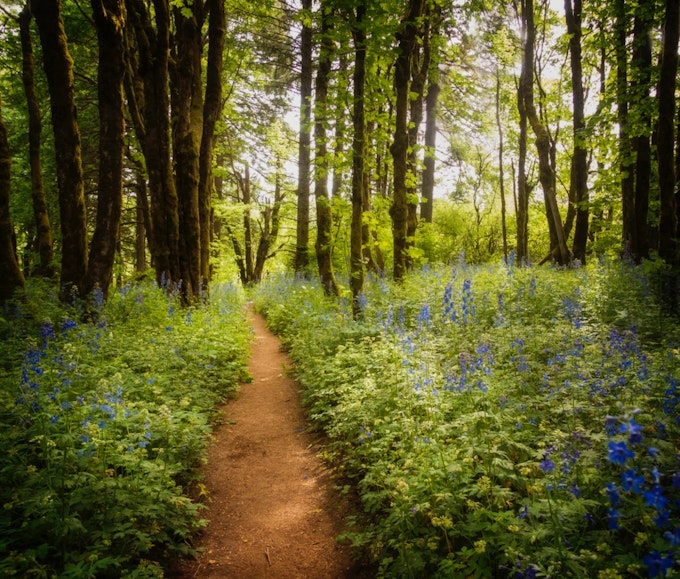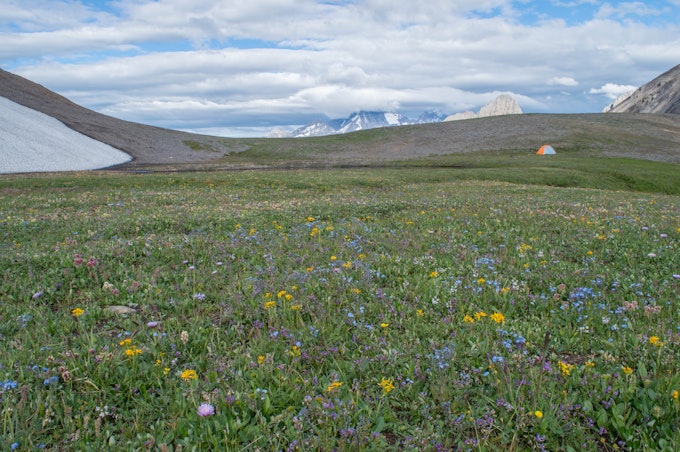7 Lessons I Learned As A Former Wildflower Picker
It would be fine if it was one person picking one flower. But it's not.

I tend to be a bit conflicted when the topic of conservation comes up, especially with other outdoors people. I think it’s a fair statement to say that, as a whole, we’re very protective of our most favourite spots. That’s a fair point: our passion for the outdoors stems from our love for the natural places we visit. Another point I find myself at odds with often is the fact that the conversation almost always includes social media. Somehow an Instagram post can either inspire people to get outside and do amazing things, or it can make a lengthy and worthwhile hike popular and unappealing to anyone wanting to avoid crowds. Much to my chagrin, I’ve found that those two things often happen simultaneously. I truly believe there are ways to spread conservation principles without alienating or discouraging new explorers or bogarting all of the best spots for ourselves. Not because I’m the world’s biggest proponent of Leave No Trace, but because at one point in time, I didn’t know what Leave No Trace was. When I first started hiking, I would pick wildflowers all the time. Today, two years later, you’ll probably be able to spot me on the trail – I’ll be the guy doing push ups on the side of the trail as people pass by. All just to get a whiff of a forget-me-not.

Here are some of the things I’ve learned as I’ve transitioned to being a reformed wildflower picker:
1. Conversations about conservation are difficult to have.
That’s not true – I should say constructive conversations about conservation are difficult to have. Outdoors people are passionate about their environment and are willing to fight for it at any sign of damage or disrespect. It’s hard to approach somebody regarding a bad habit they might have because it’s extremely hard not to get defensive. One sure fire way to ruin someone’s relationship with nature is to accuse them of destroying it! But that doesn’t mean a constructive conversation can’t be had. See lesson 2!
2. Not everyone is familiar with Leave No Trace principles.
I grew up in Saskatchewan, so my idea of a hike was walking up a tall hill and wildflowers were cactus. As much as my parents taught me about nature and respecting the landscape, it got pretty hard to remember those when I suddenly found myself on the side of a mountain in a lush meadow. Even the most hardcore adventurer likely has a favourite memory of someone teaching them about the outdoors and conservation. Conservation really is a teaching opportunity – nobody we see on a hike who’s picking wildflowers or going off trail doesn’t appreciate the outdoors as much as we do, but just might not fully understand the consequences.

3. It’s hard not to get caught up in the moment.
I keep thinking back to some of the most scenic meadows I’ve been in. The sun is out, a light breeze is blowing through the grass, and my legs are refreshed by morning dew. All while standing on the side of a freaking mountain among the prettiest green I’ve ever seen, speckled with brilliant strokes of colour. It’s nearly impossible not to feel like you’re in a movie. The moment is so surreal and harmonious. If you just pick one wildflower, inhale deeply, and exhale as you take in the landscape, you’re practically in a Folgers commercial. The problem is that it’s actually reality (which is awesome!), but demands a bit more understanding from each of us.
4. It’d be fine if it was just one person picking one flower. But it’s not.
As much as it pains me to say it, one flower picked from one meadow likely won’t have a drastic effect on the environment. However, we all have to come to understand that we’re not the only ones enjoying these places and that we will not be the only ones with urges to pick a flower and smell it. It’s a very real slippery slope that has affected many places. To fully understand the effects of what human actions can have on an ecosystem, try booking a couple spots in the Elizabeth Parker Hut at Lake O’Hara in Yoho National Park. The number of visitors is restricted at Lake O’Hara due to misuse over the years.
5. Life in the mountains ain’t easy.
Most people spend much less time in the mountains than the flora and fauna that inhabit them. We can spend less than a day in the mountains and succumb to the rapid weather changes or just brutal weather in general. The thing that turned me from a wildflower picker to a former wildflower picker was one passage in Handbook of the Canadian Rockies by Ben Gadd. In his description of the alpine poppy, he writes, “These plants amaze me. Often I have come upon a half-dozen fragile-looking poppies flopping about on some forlorn, wind-raked col. This is heart-rending – they are so brave.” The pain and admiration he conveyed through this paragraph was enough to flip the switch: everything in the mountains is alive and trying to survive, and sometimes I harm them for the sake of one fleeting moment.

6. I’m not a perfect conservationist.
There are many different ways to follow Leave No Trace principles: packing out all garbage, staying on trails, avoiding stepping on plants, and not picking wildflowers are just a few ways to actively conserve the ecosystems that bring us so much joy. Unfortunately, there are times when I’m not the perfect conservationist. And, hopefully not to the shock of fellow Explorers, I think that’s OK. The main thing is that we really try. If we familiarize ourselves with Leave No Trace, we can actively try to do better. With any luck, we might have a few trusted friends we can rely on to remind us if we forget here and there.
7. Social media inspires.
Taking a beautiful picture of one of your favourite places and posting it to Instagram is probably going to make at least one person want to go there. And that’s awesome! But I’ve never discovered a hidden gem and I don’t randomly walk into the forest to see what I can find. Ideas for every hike I’ve done have come from somewhere, so I can hardly call any of these spots “mine” because they’re everybody’s – once again, that’s pretty awesome! Inspiring people to go outside and experience beauty that’s right there waiting for them is an incredible thing to be doing! However, it’s prudent to be thinking about what we inspire people to do. Hiking to the top of a mountain – great! Feeding the chipmunk that resides there – not so great. I think the responsibility of every conservationist is to promote Leave No Trace principles, rather than just reprimanding. In my opinion, that’s what makes #ProtectTheWild a great initiative.

Cover photo: Lisa Cartier
We want to acknowledge and thank the past, present, and future generations of all Native Nations and Indigenous Peoples whose ancestral lands we travel, explore, and play on. Always practice Leave No Trace ethics on your adventures and follow local regulations. Please explore responsibly!
Do you love the outdoors?
Yep, us too. That's why we send you the best local adventures, stories, and expert advice, right to your inbox.








